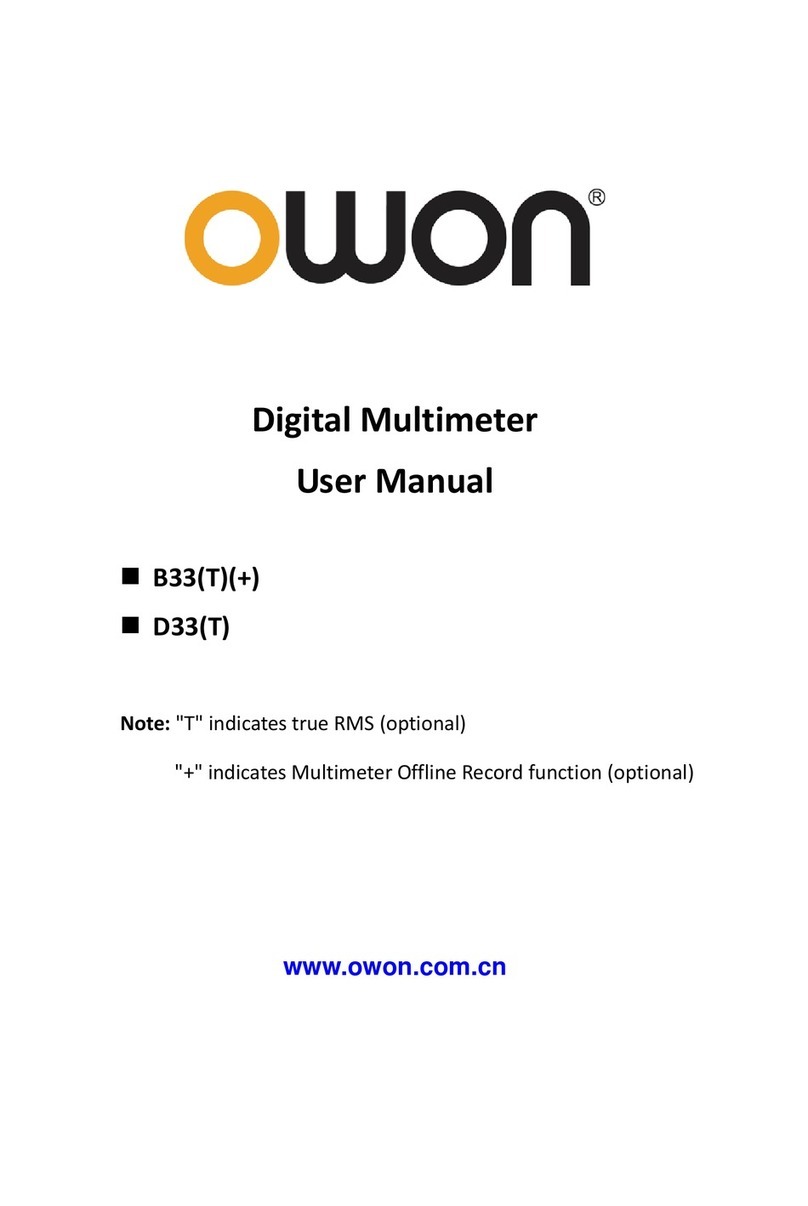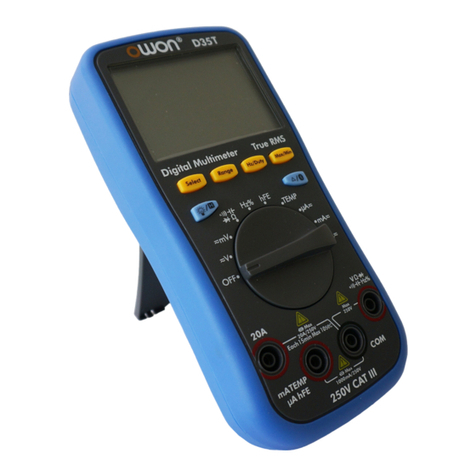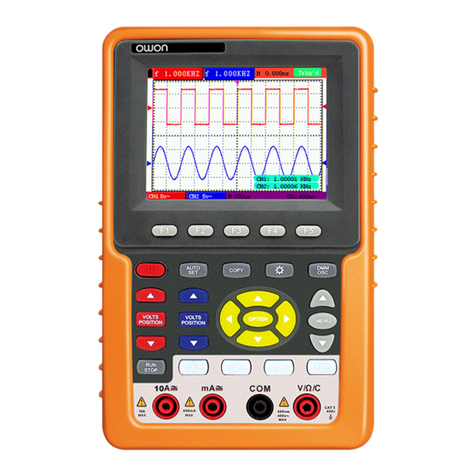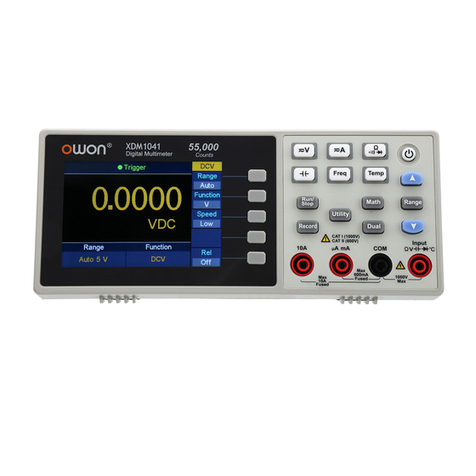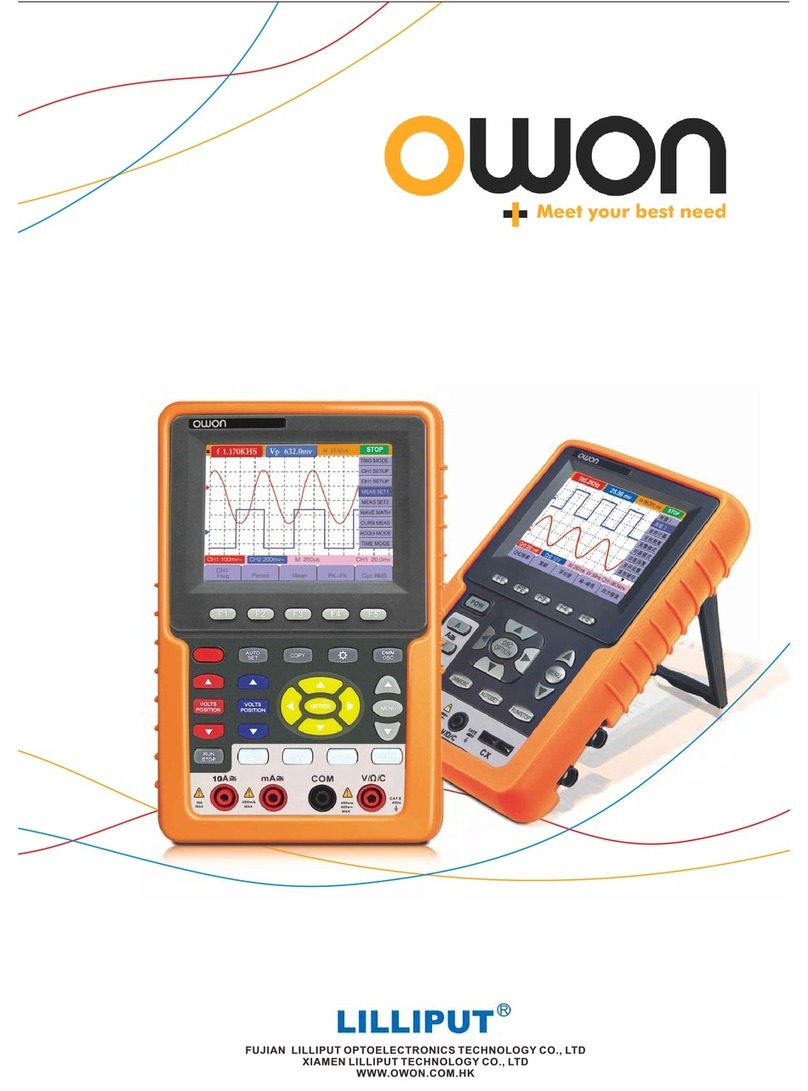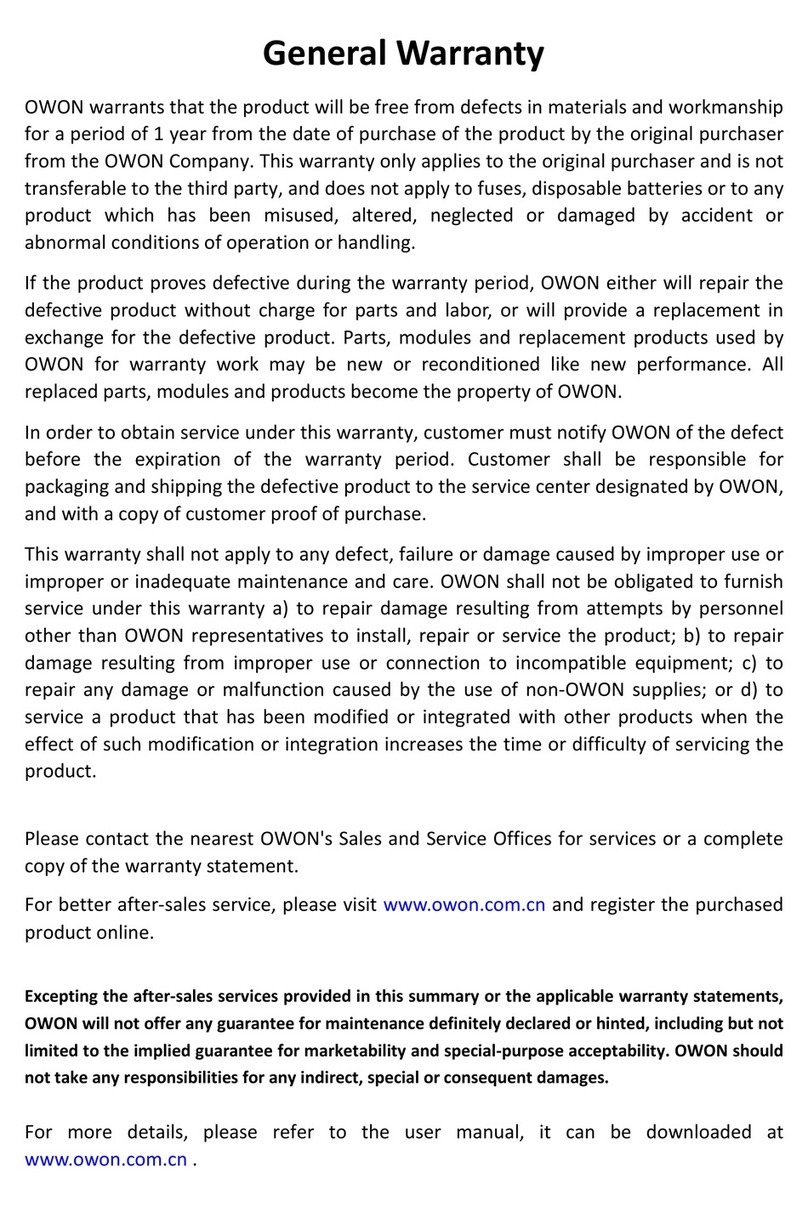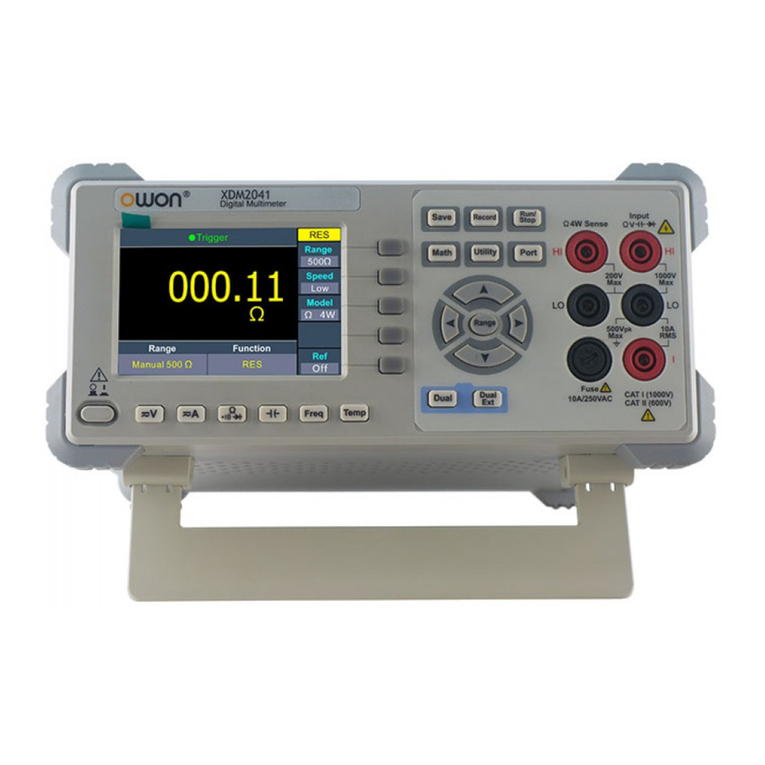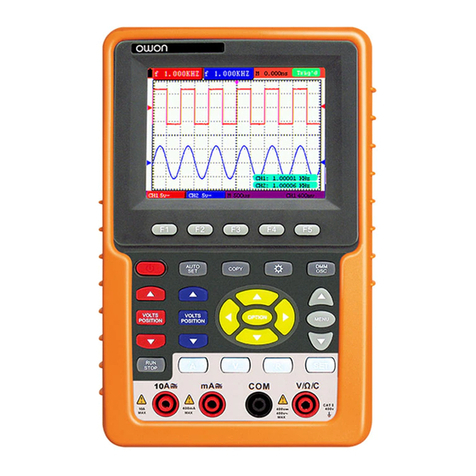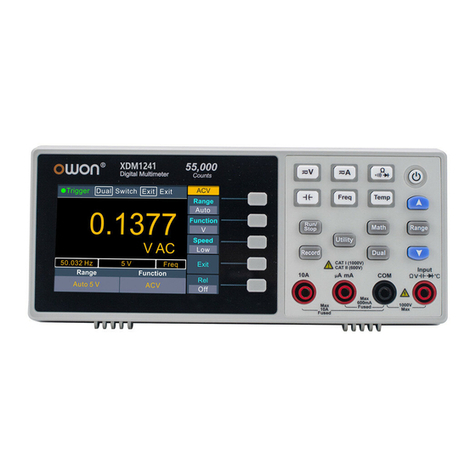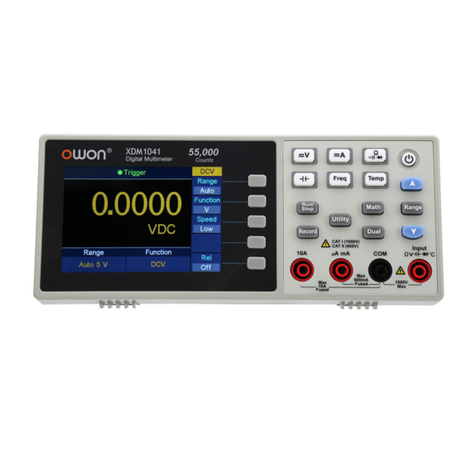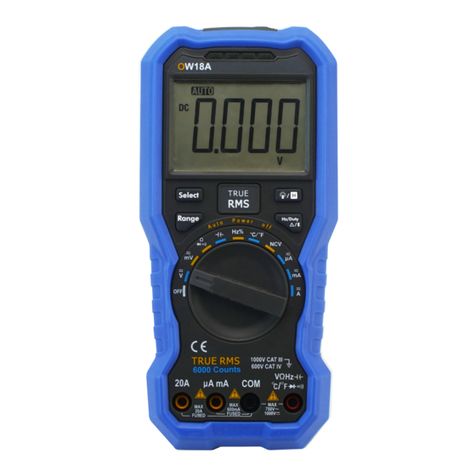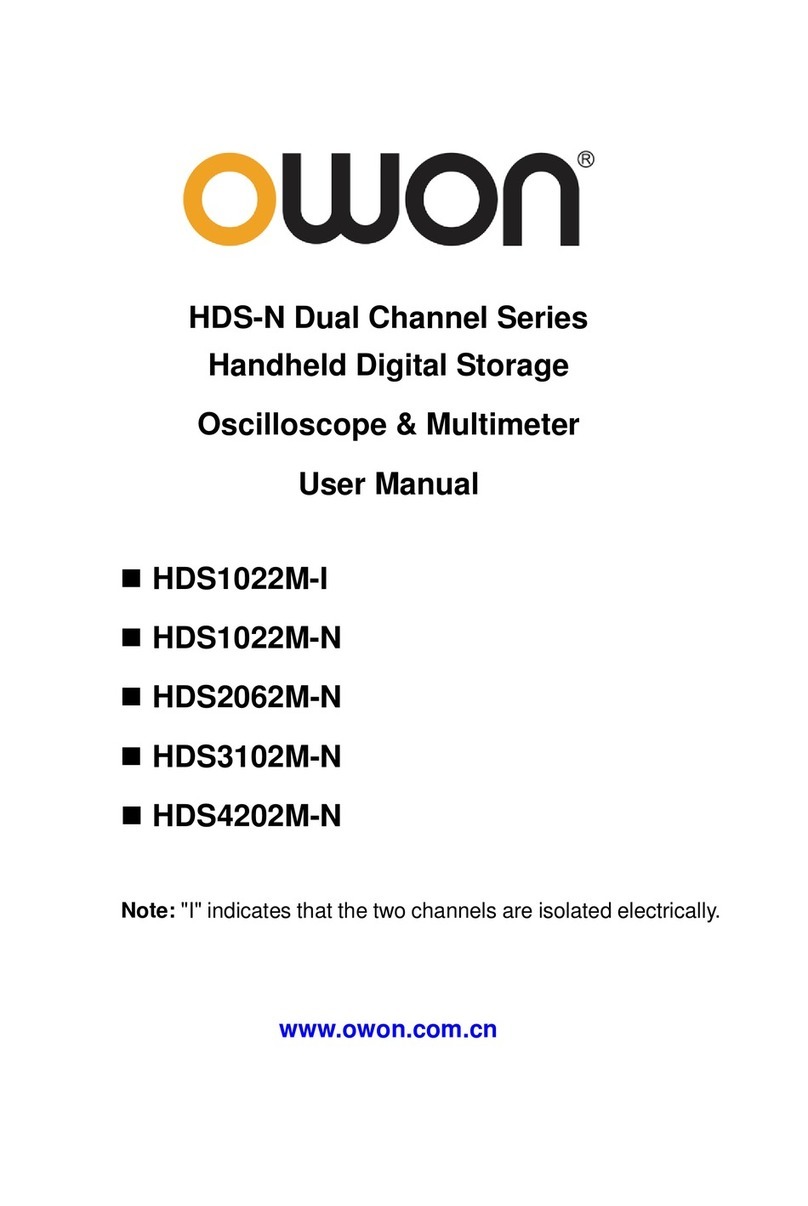HDS2062M-N Handheld DSO & DMM Contents
5.17 Using Waveform Mathematics Functions···········································································22
5.18 Use USB flash disk to save waveform data ·········································································23
6. USING THE MULTIMETER······························································ 24
6.1 About this Chapter··················································································································24
6.2 Making Meter Connections····································································································24
6.3 Multimeter Operation Window ·····························································································24
6.4 Making Multimeter Measurements ·······················································································25
6.4.1 Measuring Resistance Values ····················································································25
6.4.2 Measuring Diode··········································································································26
6.4.3 On-off Test·····················································································································27
6.4.4 Measuring Capacitance·······························································································27
6.4.5 Measuring DC Voltage·································································································28
6.4.6 Measuring AC Voltage·································································································29
6.4.7 Measuring DC Current·································································································30
6.4.8 Measuring AC Current·································································································31
6.5 Freezing the Readings·············································································································32
6.6 Taking a Relative Measurement·····························································································33
6.7 Selecting Automatic/ManualRange Adjustment ··································································34
7. ADVANCED FUNCTION OF OSCILLOSCOPE······················35
7.1 About this Chapter··············································································································35
7.2 Setting the Vertical CH1 and CH2·····················································································35
7.2.1 Setting the Channel Coupling·················································································36
7.2.2 Open and Close Settings on Channel ···································································37
7.2.3 Setting the probe attenuation··················································································37
7.2.4 Setting of Inverted Waveform ·················································································37
7.3 Make the Math Function Menu Setting ············································································38
7.4 Setting the Trigger System ·································································································39
7.5 Triggering Control ··············································································································40
7.5.1 Edge Triggering········································································································40
7.5.2 Video Triggering ·······································································································41
7.5.3 Alternate trigger··········································································································43
7.6 Selecting the acquisition mode ···························································································45
7.7 Display Setting·····················································································································45
7.7.1 Display Style·············································································································46
7.7.2 Persistence···············································································································47
7.7.3 XY Mode····················································································································47
7.7.4 Cymometer ···············································································································47
7.8 Waveform Saving Setups····································································································48
7.9 Function Setting Menu ·······································································································49
7.10 Making Automatic Measurements···················································································50
7.11 Setting the Cursor Measurements····················································································51
2
